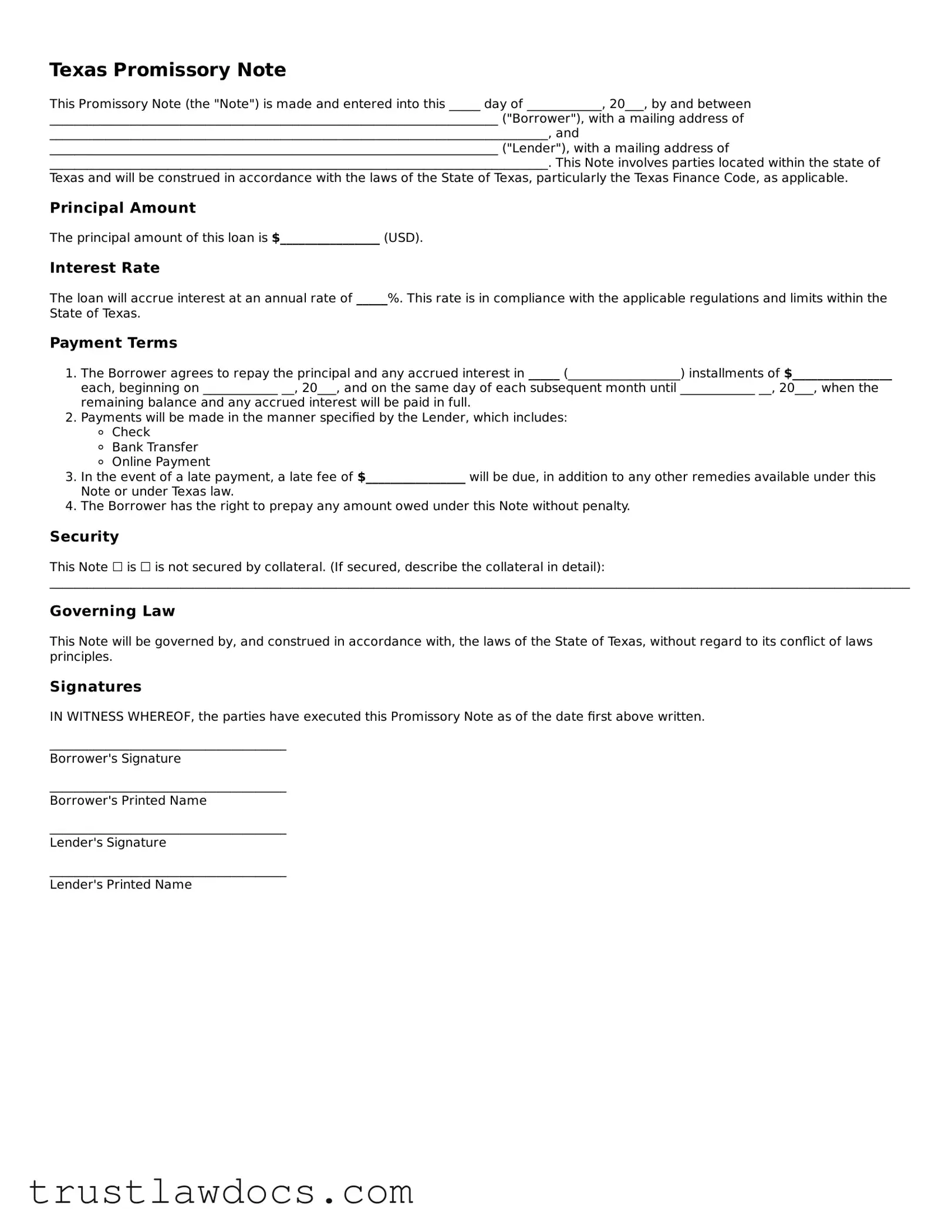What is a Texas Promissory Note?
A Texas Promissory Note is a legal document that outlines the terms under which one party (the borrower) promises to repay a sum of money to another party (the lender). This form is specifically tailored to comply with the legal requirements set by the state of Texas, ensuring that the agreement is enforceable under state law. It details the loan amount, interest rate, repayment schedule, and any other terms agreed upon by the parties involved.
Is a written Promissory Note required in Texas?
While verbal agreements can be legally binding, a written Promissory Note is strongly recommended in Texas. This is because a written document provides a clear, enforceable record of the loan and its terms, which can be crucial for resolving any disputes that may arise. Moreover, certain types of loans in Texas, such as those involving real estate, must be documented in writing to be enforceable.
What information needs to be included in a Texas Promissory Note?
A Texas Promissory Note should include: the names and addresses of the borrower and lender, the amount of money being borrowed, the interest rate, the repayment plan (including dates and amounts), and any collateral securing the loan. Additionally, it should detail the consequences of non-payment and any other terms relevant to the agreement. Both parties should sign and date the document, preferably in the presence of a notary public.
How is interest determined for a Promissory Note in Texas?
The interest rate for a loan documented in a Texas Promissory Note must comply with the state's usury laws to avoid being considered illegal. As of the last update, Texas sets a maximum annual interest rate that can be charged. However, the parties can agree to any interest rate as long as it does not exceed this legal maximum. It's crucial to verify the current legal limit on interest rates to ensure compliance.
Can a Texas Promissory Note include provisions for late fees and collateral?
Yes, a Texas Promissory Note can include terms for late fees and collateral. Late fees must be reasonable and designed to compensate the lender for the missed payment rather than punishing the borrower excessively. As for collateral, specifying what it is in the Promissory Note secures the loan by giving the lender a right to seize the property if the loan is not repaid according to the agreed terms.
What happens if the borrower fails to repay the loan as agreed?
If the borrower fails to meet the repayment terms outlined in the Texas Promissory Note, the lender has the legal right to pursue collection. This may involve initiating a lawsuit to recover the outstanding amount. If collateral was pledged, the lender might also have the right to seize it. The steps a lender can take depend on the terms detailed in the Promissory Note and applicable Texas laws.
Where can one obtain a Texas Promissory Note form?
A Texas Promissory Note form can be obtained from legal document providers, attorneys specializing in Texas law, or through online resources offering legal forms customized for Texas. It's important to ensure that the form complies with Texas law and includes all necessary elements. Consulting with a legal professional is recommended to ensure that the document meets legal standards and properly protects the interests of both parties.
